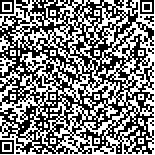李泽文,郭琛琛,刘丽,等.低频重复经颅磁刺激联合虚拟情景互动训练对脑卒中后上肢运动功能恢复的影响[J].中华物理医学与康复杂志,2023,45(5):397-401
扫码阅读全文

|
| 低频重复经颅磁刺激联合虚拟情景互动训练对脑卒中后上肢运动功能恢复的影响 |
|
| |
| DOI:10.3760/cma.j.issn.0254-1424.2023.05.003 |
| 中文关键词: 重复经颅磁刺激 虚拟情景互动训练 运动再学习 神经可塑性 |
| 英文关键词: Transcranial magnetic stimulation Virtual scenario training Interactive training Motor relearning Neuroplasticity Stroke |
| 基金项目:山东省医药卫生科技发展计划项目(202020010789);山东省中医药科技项目(2021M006) |
|
| 摘要点击次数: 4064 |
| 全文下载次数: 4329 |
| 中文摘要: |
| 目的 观察低频重复经颅磁刺激(rTMS)联合虚拟情景互动训练对脑卒中患者上肢运动功能恢复的影响。 方法 采用随机数字表法将90例脑卒中患者分为伪rTMS组、rTMS组及联合组,每组30例。3组患者均给予基础药物、常规康复及综合护理干预,在此基础上伪rTMS组辅以rTMS假刺激,rTMS组辅以低频(1 Hz)rTMS治疗,联合组则辅以低频(1 Hz)rTMS治疗及虚拟情景互动训练,各组患者均每周治疗5 d。于治疗前、治疗4周后检测3组患者运动诱发电位(MEP)的皮质潜伏期(CL)、中枢运动传导时间(CMCT),使用表面肌电(sEMG)技术采集患侧肱二头肌、肱三头肌均方根值(RMS),同时采用美国国立卫生研究院卒中量表(NIHSS)、上肢Fugl-Meyer量表(FMA-UE)及改良Barthel指数(MBI)评定患者神经缺损程度、上肢运动功能和日常生活活动(ADL)能力情况。 结果 治疗后3组患者CL、CMCT、RMS参数及NIHSS、FMA-UE、MBI评分均较治疗前明显改善(P<0.05),并且rTMS组CL、CMCT、RMS参数及NIHSS、FMA-UE、MBI评分亦显著优于伪rTMS组水平(P<0.05),联合组CL[(24.01±1.16)ms]、CMCT[(12.15±0.76)ms]、肱二头肌RMS[(8.97±4.33)μV]、肱三头肌RMS[(7.30±2.18)μV]、NIHSS评分[(8.80±2.14)分]、FMA-UE评分[(42.70±8.76)分]及MBI评分[(72.57±9.88)分]均显著优于rTMS组及伪rTMS组水平(P<0.05)。 结论 低频rTMS联合虚拟情景互动训练能有效改善脑卒中患者上肢运动功能及ADL能力,减轻神经缺损症状,该联合疗法值得临床推广、应用。 |
| 英文摘要: |
| Objective To observe any effect of combining low-frequency transcranial magnetic stimulation (rTMS) with interactive virtual scenario training on the recovery of upper limb motor function after a stroke. Methods Ninety stroke survivors were randomly divided into a pseudo-rTMS group, an rTMS group and a combination group, each of 30. In addition to basic medication, conventional rehabilitation and nursing care, the pseudo-rTMS, rTMS and combination groups received either sham rTMS treatment, 1Hz rTMS or virtual situational interaction along with 1Hz rTMS 5 days a week for 4 weeks. Before and after the 4 weeks their motor evoked potentials, cortical latency and central motor conduction time were measured, and surface electromyography was applied to the affected biceps brachii and triceps brachii. Meanwhile, the National Institutes of Health Stroke Scale, the Fugl-Meyer upper extremity assessment and the modified Barthel index were employed to assess the degree of neurological deficit, upper extremity motor function and ability in the activities of daily living (ADL). Results After the 4-week intervention, a significant improvement was observed in all of the outcome measurements with all three groups. At that time the average scores of the rTMS group were significantly better than the pseudo-rTMS group′s averages but the average scores of the combination group were significantly better than those of either of the other two groups. Conclusion Repeated application of low-frequency transcranial magnetic stimulation combined with virtual scenario interactive training can effectively improve the upper limb motor function and ADL performance of stroke survivors, and relieve the symptoms of neurological deficit. The combined therapy is worthy of application in clinical practice. |
|
查看全文
查看/发表评论 下载PDF阅读器 |
| 关闭 |